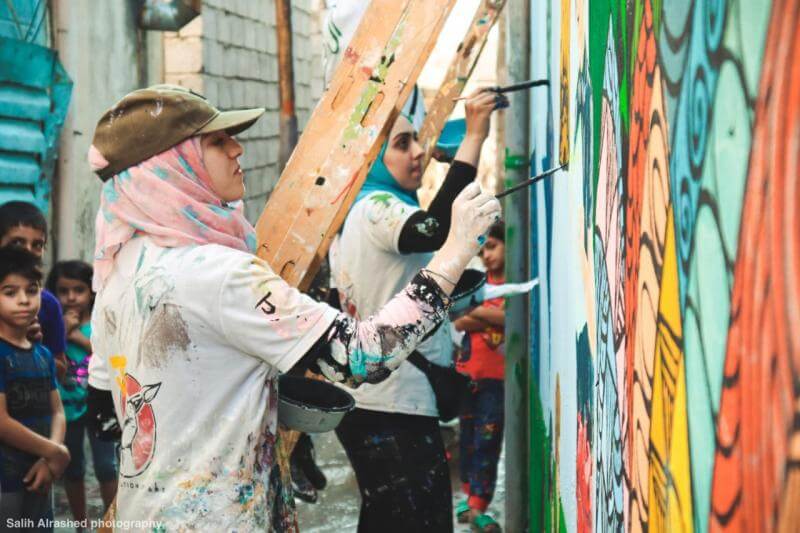Society
3.2.2020
The “Art Revolution” is reintroducing color to Mosul

The second largest city in Iraq is finding inventive ways to restore itself, two and a half years after its liberation from the control of the Islamic State. Through a pacific, yet powerful movement, the creative youth of Mosul is instrumentalizing art as a form of both therapy and revolution, patching up their ravaged city one mural at a time.
It is no no easy task to rise from the rubble, yet a small group of artists are accepting the challenge, heads high and brushes in hand. Through a movement they coined as the “Art Revolution,” they promote unity within the city’s diversity and work to rebuild confidence within their war-torn community.
Enduring despite the difficulties
This grassroots movement is predominantly composed of local, new generation creatives attending the College of Fine Arts in Mosul.
Between 2014 and 2017, the College had no choice but to close its doors after suffering extensive damage from the bombardments but with the financial aid of the United Nations Development Programme, it reopened last year. Since then, students have returned with a greater thirst of utilizing their art as a vehicle for change, beyond the school campus.

College of Fine Arts of Mosul
Regaining a sense of agency
Speaking with Radio France Internationale, Saleh Hama, an active member of the artistic revolution, opens up on the importance of the school mural.
“The terrorists had forbidden us to paint. We had to hide ourselves and our work.” The thirty year old continues on: “They wanted to kill our humanity, but they didn’t succeed. As soon as ISIL was defeated, art resurfaced in an even more beautiful way. Look at this fresco, it’s a message to the world to say: we are still here! There is still art in Iraq and Mosul.”

Roses growing from the concrete
The vibrant colours cover the dilapidated gray facades, some still riddled with bullets, creating a quite unusual contrast. A harmony is maintained, as the activists refurbish the Old City of Mosul with a new touch, while still honoring its rich history.
The murals feature some of the emblematic architecture destroyed amid the conflict, such as the leaning minaret of al-Nuri Mosque, the winged bull of Nineveh known as the Lamassu and the Nabi Yunus Mosque.

Since the liberation of Mosul from the Islamic State, the local government has activated campaigns to clear rubble and reconstruct thousands of homes to allow for the gradual reinsertion of its displaced people.
The city’s mayor, Zuhair al-Araji, acknowledges the lack of institutional support for student led “Art Revolution,” due to a lack of budget as the city still works to get back onto its two feet.
“Nonetheless, we are facilitating their work by removing any obstacles they might encounter. This movement is a clear indication that the youth want to breathe life into their society and restore the love of culture and arts in addition to preaching tolerance and coexistence. The youth were the most affected by ISIS restrictions, which were alien and strange to the society,” Araji said.
popular

